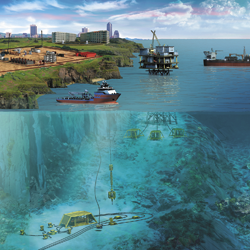international exhibiting
 I'm about to exhibit in my first international trade show, and I know it's a whole new ballgame overseas. When it comes to basic exhibit construction as well as installation-and-dismantle logistics, what are some of the critical differences between U.S. and international shows? I'm about to exhibit in my first international trade show, and I know it's a whole new ballgame overseas. When it comes to basic exhibit construction as well as installation-and-dismantle logistics, what are some of the critical differences between U.S. and international shows?

While it would make life much easier for exhibit managers, there aren't any global standards for exhibiting. In fact, every country
has its own exhibiting rules and practices, and sometimes, regulations even vary from venue to venue. But here are six international-exhibiting quirks that come as a surprise to most rookies. Tuck this bit of knowledge under your beginner's belt, and you'll be ahead of the curve when it comes to international exhibiting.
1. Raised Floors - Outside the United States, fire codes often prevent exhibitors from running cables and cords (such as those for electrical, audiovisual, and Internet) under their exhibit carpet. In such circumstances, you usually need to hide your cables under a raised floor. Normally made of wood and measuring roughly 4 inches tall, the flooring is then covered with carpet or laminate. Note that a built-in wheelchair-accessible ramp may be required.
2. Labor - International show contractors typically don't have a large pool of laborers on hand to install and dismantle your exhibit; plus, there are no unions overseas. So if your exhibit is relatively small, you can install the entire thing yourself or hire the show contractor for minimal assistance. Just about the only tasks you can't complete
yourself are plugging in your main power board to the convention center's system and driving a forklift. If your exhibit requires considerable labor and equipment, however, you'll likely need to hire a local custom-build firm or a U.S.-based exhibit house with international experience to coordinate and oversee your I&D labor.
3. Side Walls - At most U.S. shows, line-of-sight rules stipulate that for the first 5 feet of your space, side walls can't be more than 4 feet tall so other exhibitors' booth spaces remain clearly visible to attendees in the aisles. However, this rule exists in few places outside the United States, so side walls in foreign countries can usually extend all the way to the edge of a space. If you do not construct your walls to the full allowable height and extend them to the edge of your space, the unsightly and often unfinished back side of your neighboring exhibitors' side walls may be visible, and it will be up to you and your exhibit builder to hide this unattractive mess. You can try to head off this issue by asking show management for your neighboring exhibitors' booth drawings prior to the trade show.
4. Credit Cards - In the United States, you can practically buy a mortgage
via credit card, no questions asked. However, the rest of the world is not as trusting, and getting show services billed to your credit card can be a hassle. Many times, even if you have pre-approved your show-services order and the amount you want billed, your card will not be charged until you reach the show floor and the suppliers
track you down to view the card and obtain your signature. If you are not on show site, numerous e-mails or phone calls indicating your desire to place your charges on your credit card may be required before vendors will actually run your card. Thus, for most international shows, you'll need to track outstanding costs. If you don't follow up on these charges, you could receive invoices including late fees several weeks or even months after the show.
5. Drayage - In most international venues, drayage doesn't exist. It is, however, making inroads in Europe, where organizers have realized its money-making potential. Still, in many venues, you'll pay for forklift rental to unload and load your exhibit components. The same companies that offer this service will typically store empty crates during the show and return them when the show closes. This forklift and crate-storage service tends to be bundled with the offerings of the official freight forwarder.
6. On-site Orders - At most international shows, placing an on-site order for services and equipment is a crapshoot at best. All advance orders receive priority over your on-site order, so you frequently won't know whether your order will be filled until just before the show opens. Bottom line, it's best to place all show-related service orders prior to installation if possible.
Certainly, each country and sometimes each venue has its own rules and regulations. But armed with the knowledge of these six international-exhibiting oddities and ways to deal with them, you'll look like a veteran globe-trotting exhibitor, even if it's your first trip across the pond.
- Lorraine Lorenzini, director of international account management, Freeman, Dallas
|






 I'm about to exhibit in my first international trade show, and I know it's a whole new ballgame overseas. When it comes to basic exhibit construction as well as installation-and-dismantle logistics, what are some of the critical differences between U.S. and international shows?
I'm about to exhibit in my first international trade show, and I know it's a whole new ballgame overseas. When it comes to basic exhibit construction as well as installation-and-dismantle logistics, what are some of the critical differences between U.S. and international shows? 



